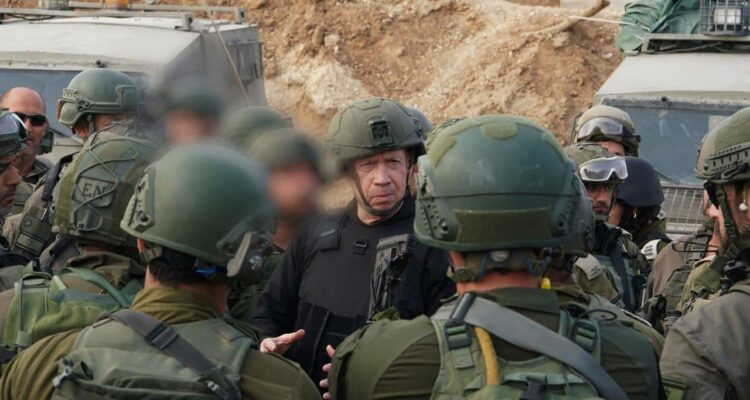The unit uses an advanced digital map that divides Gaza into over 600 polygons, enabling evacuations from very specific areas.
By Yaakov Lappin, JNS
In the history of armed conflict, there is no known precedent for the scale and effort involved in the Israel Defense Force’s civilian evacuation program in the Gaza Strip.
Since the war began, the IDF has evacuated some 1.5 million Gazan civilians in an effort to get them out of harm’s way, using an array of means.
In recent days, a senior official from IDF Southern Command shed additional light on this effort. The Southern Command’s Population Evacuation Unit leads these efforts, and it has become a core part of the IDF’s operational language, he said.
The unit plays the unique role of connecting the civilian situation picture to the IDF’s operational array, fulfilling a role no other unit is able to.
The IDF’s goals in moving Gaza’s civilian population are twofold, according to the official. The primary goal is to protect it, while at the same time granting the military the operational freedom it needs to go after Hamas.
He emphasized that the IDF’s efforts in this regard are unprecedented, and that never in history has a military conducted a civilian evacuation on this scale.
The Israeli military has built up the capability to deal with this complex challenge over time, said the source.
His unit uses an advanced digital map that divides Gaza into over 600 polygons, enabling evacuations from very specific areas, he explained.
The IDF employs phones calls, text messages, flyers, loudspeakers and media platforms to get the message through—and it is getting through, the official said.
Using various tools, the Population Evacuation Unit can keep tabs on how many residents have left a given area.
This real-time data has become a common language not only within the IDF, distributed to ground, air and naval units, but also among Palestinian civilians, he said. Gazans post the evacuation orders on buildings and discuss them, including on social media when possible, he explained.
The IDF has established a “very high” degree of credibility with Gaza residents, who comply with calls to evacuate specific areas, he said.
Hamas, unsurprisingly, takes a dim view of the Gazan population complying with IDF evacuation calls, since this strips it of its human shields, the official noted. The IDF has seen many cases of Hamas trying to stop these evacuations, and of the most cynical use of human shielding imaginable, such as finding terrorists operating out of the living room of a family, he said.
The IDF also works closely with its legal officers to ensure compliance with international law.
Now, as the fighting focuses on southern Gaza, especially Khan Yunis, the IDF has created a humanitarian corridor through which it has called on Gazans to evacuate.
In northern Gaza, around 300,000 people have remained in place for a variety of reasons, including medical and economic. Some have gone to local shelters based on their understanding that the IDF will not strike there, he explained.
Already by December, the IDF had evacuated over a million people from northern Gaza, including 850,000 from Gaza City and nearly the entire population of areas like Shejaiya.
In southern Gaza, it encouraged civilians to move into “humanitarian belts” in Al Mawasi, west of Khan Younis, and Rafah.
The IDF has made a huge effort to enable them to continue to evacuate and to provide them with a humanitarian corridor, the official said.
In southern Gaza there is a shortage of shelters, so most of the population has been asked to leave, he added.
Today, most Gazans are located in Rafah, in the Mawasi safe zone, as well as in Dir al-Balah in central Gaza.
The mechanism for evacuating civilians from Khan Yunis is the same as was used in prior evacuations, said the source.
A green polygon on the unit’s digital map means over 75% of the population has left, enabling ground forces to move in.
With regard to northern Gaza, the official said that the IDF has not seen a trend of civilians moving back to the area from the south. As the war’s objectives have not yet been reached, they currently have no way to do so, he added.
His unit would continue to enable every evacuation necessary for the IDF to carry out its operational plans, he said, adding that no areas were off limits.





